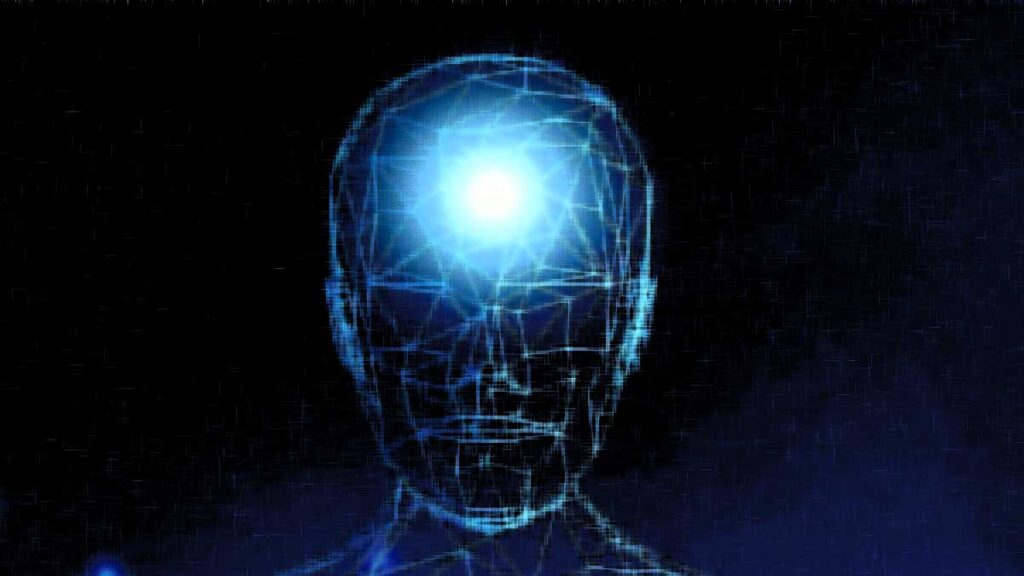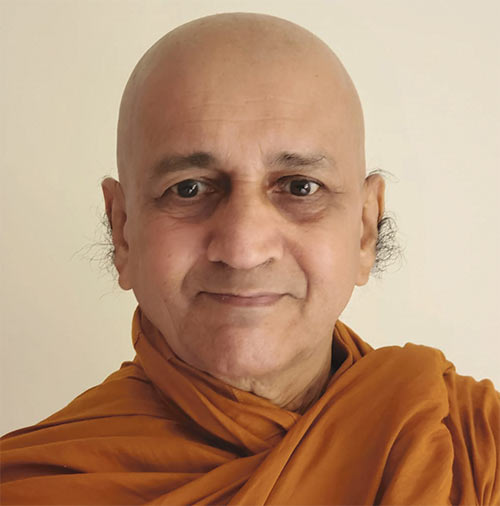What is the mind? Where is it? Is a thing called mind?
Answering these issues, western- world intellectuals maintain that there is a form of energy called the mind within the body of any living being to perform its physical activities. These philosophers and renowned scientists have tried to analyze the attitude and the different behaviour of the mind. Albert Einstein once admitted that the mind of a dying being would travel towards the incidence of conception. This is similar to the concept of Vijñāna or consciousness in Buddhism.

Some religious teachers say that the mind is the soul. The Buddha says that the self-view (SAKKAYA DHITTI) is one of the mental tendencies or mental formations. Unless there are mental tendencies the mind cannot do anything because it is not active. The mind does something with the presence of its thoughts. The next concept is the attitudes are produced from the mind. Attitudes are said to be different forms of movements in mind. The mind itself is unable to do anything.
There are fifty-two mental formations, both in meritorious and un-meritorious (despicable) categories producing different kinds of Citta or consciousness. In Buddhism, meritorious ones are called KUSALA, are SADHDHA, HIRI and OTHTHAPPA. Despicable-(AKUSALA) ones are called MOHA, AHIRIKA and ANATHTHAPPA.
Any living being belongs to KAMA LOKA and RUPA LOKA which exist in the universe. The Buddha says that there are a number of cakkavalas (different worlds) in one universe.
Then there are thirty-one planes or bhumis in one universe. They are;
1. Four unfortunate miserable planes or FOUR HELLS.
2. The human world.
3. Six sensual divine worlds.
4. Sixteen fine material (RUPAWACHARA BRAHMA LOKA) worlds.
5. Four immaterial worlds-FORMLESS.
Buddhist believe in Karma or actions and their results. The Karmas can be Good Karma and Bad Karma. Anyone doing Good Karmas will be born in good planes. In the same way, anyone doing Bad Karma will have miserable results. Wise ones doing meritorious activities will be, in the later life, born in good planes.
We should control our mind not to engage in de-meritorious activities as the mind is responsible for all activities a person or a living being does. We should not indulge ourselves in evil things. Always we must be mindful of the attitudes of our mind.
To understand what the mind does, we should practice meditation of mindfulness called CHITHTHANUPASSANA in Buddhism. It helps us to understand the movements in the mind. As long as the mind exists it always lives with the thoughts and mental attitudes. The mind cannot live without mental attitudes.
The mind, which cannot be seen even under a microscope, controls the body. The body is made of four forces or elements. They are;
1. Pathavi, earth elements
2. Apo, water elements
3. Tejo, fir elements
4. Wayo, air elements
These elements, which cannot be partitioned any further, are tinier than atoms, any small particles or molecules. The body composed of these elements change at every second or moment.
As regards the mind, Lord Buddha has analyzed the mind into eighty-nine parts (WORDLY CHITHTHAS) and again into one hundred and twenty-one parts (WITH JANA and SPIRITUAL CHITHTHAS.)
As said earlier, the constituent elements of the body and the mind changes all the time while generating new constituent elements to replace them. The result is a continuous generation of matter (body) and mind without any interruption or violation.
Abhidharma, the special discourses in Buddhism, analyses the mind further, the in-depth study of which can be found in discourses of Majjhima Nikaya and Samyutta Nikaya while the commentaries made subsequently by scholarly monks, make further explanations to them.
Asanna Kamma is the mind that occurs just before anyone’s death. It could be wholesome (Good Karma) or unwholesome (Bad Karma) karma. The dying one will have the death consciousness or departing consciousness. If anyone has the good consciousness, as a result of his remembering the Good Karmas he did, it is believed that that living being will be born in a good place or a good plane in the universe.
The cetana volitions (wishes) are included in the mental factors or ‘Sankharaskhanda’ (SANKARA PACHCHAYA WIGNGNANA) the aggregate of mental formations. The mind is active only when there are Sankharas present. The mind is ceased or extinguished when it is void of any mental formations. This state of mind is called the salvation, liberation or supreme Nibbana. In Buddhism, this level of mind is said to be free from all impurities. (WISANKARA GATHAN CHITHTHAHAN)
. The spheres of mind are analysed into four categories. They are;
1. Kamavacara Citta in the sensuous sphere consciousness
2. Rupavacara Citta in the fine-material sphere consciousness
3. Arupavacara Citta in the immaterial sphere consciousness
4. Lokuttara Citta the super-mundane consciousness
Living beings accumulate the worldly material Karma (MERITS AND SIN) and continue to exist in the Samsara, which is a cycle of birth and death, until they stop further accumulation. Those who continue to do evils and accumulate unwholesome Karma will be reborn in the places of sufferings, like four hells and continue to suffer as a result of their actions.
Those who do wholesome deeds through the mind, speech and body, practising ‘Saddha’ the confidence, Sila’ the discipline, (morality), ‘suta’ learning of Dhamma, and ‘Caga’ the generosity and ‘panna’ the wisdom, and not to committing unwholesome Karmas, associate virtuous friends, observe the refuge of the Triple Gem, abandoning evils. After death, they go to one of six different kind of heavenly worlds, where the sources for pleasing senses are available in abundance.
And another category, practising Dana, Sila and Bhavana, practising meditation for Samadhi. Tranquillity and wisdom may move to one of the Brahma Worlds where life is longer for an incalculable number of years.
But wise ones understand anything including the life of these worlds are impermanent and their life-spans will extinct when the accumulation of Good Karma finish. Therefore they will practice Dana, Sila and Bhavana, (the charity, morality and meditation or practising Dhamma). They understand Dhamma, five aggregates of skandha, Dhatu the elements, the twelve Bases of Ayathana, Paticcasamuppada, Catu Satipatthana, (the four foundation of mindfulness) Samatha Vipassana Bhavana (the tranquillity and insight meditation.)
Buddhists observing precepts will prepare themselves for meditation and practise the loving-kindness meditation towards all living beings softening their mind. With the improved stated of loving-kindness, they extend their thoughts (Metta meditation) towards wider ranges of beings of the whole universe, such as Devas, Brahmas, human beings, animals etc. “May all beings be well and happy! May all beings be free from suffering! May they be free from miseries! May then attain the Nibbanic bliss! When practising loving-kindness in this manner they enjoy real happiness in their hearts.
Practitioners with the mind, improved with meditation, can meditate on the impure bodily parts, (Pilikul Bhavana). Followers of this types of meditation will understand the state of their body in reality. Correct understanding is called yoniso manasikara in Buddhism.
Meditating on the impermanent nature of worldly things including the body will lead the mind to un-attachment. It will understand that Death is common for everyone. The Buddhist knowing this, live with no fear of death. The meditation in one’s own body and mind is unique to understand the reality of life.
By developing the four kinds of meditation techniques, (METHTHA/LOVING KINDNESS/SYMPATHY/) anyone will be able to have the useful virtues that we really need to continue our practice until the final goal.
You are free to choose your own meditation method. The knowledge gained from meditation will help you understand life and the way to be free from its sufferings. With the proper understanding of the suffering in life, one can practise the Breathing Meditation, known as Anapana Sati.
When craving for this body and mind, we cannot escape from the sufferings attached to them. This is why we should understand the real nature of the body and the mind. The temporary satisfaction is a delusion. The body is merely a bundle of corporeal units called “Rupa kalapa mity” in Buddhism.
The space element exists around the bundles of corporeal units. Although the four elements, (mentioned earlier) are present, there is the space elements (.ATALOS DHATHU) which is more in quantity present around it) Because of the delusion and ignorance a living being can’t see the reality of these elements. After the death, the body will be dissolved into these elements and the force of the mind or vijjana will find the place depending on the assanna kamma and leading to the resumption of the life cycle in the Samsara.
Only the ones with the mind improved through the mediation can see the true nature of these things. Only the one with a mind far improved with higher meditation after cultivating Sati, Samadhi and Panna can seek the enlightenment to be free from Samsara.
“Amatan hetam p aribhunjati-Ye kayagata satim paribhunjati”
(If anybody cultivates the mindfulness of the body, he indeed experiences the supreme bliss of deathlessness.)

Ataragalle Sankicca Thero.
asankicca@gmail.com







